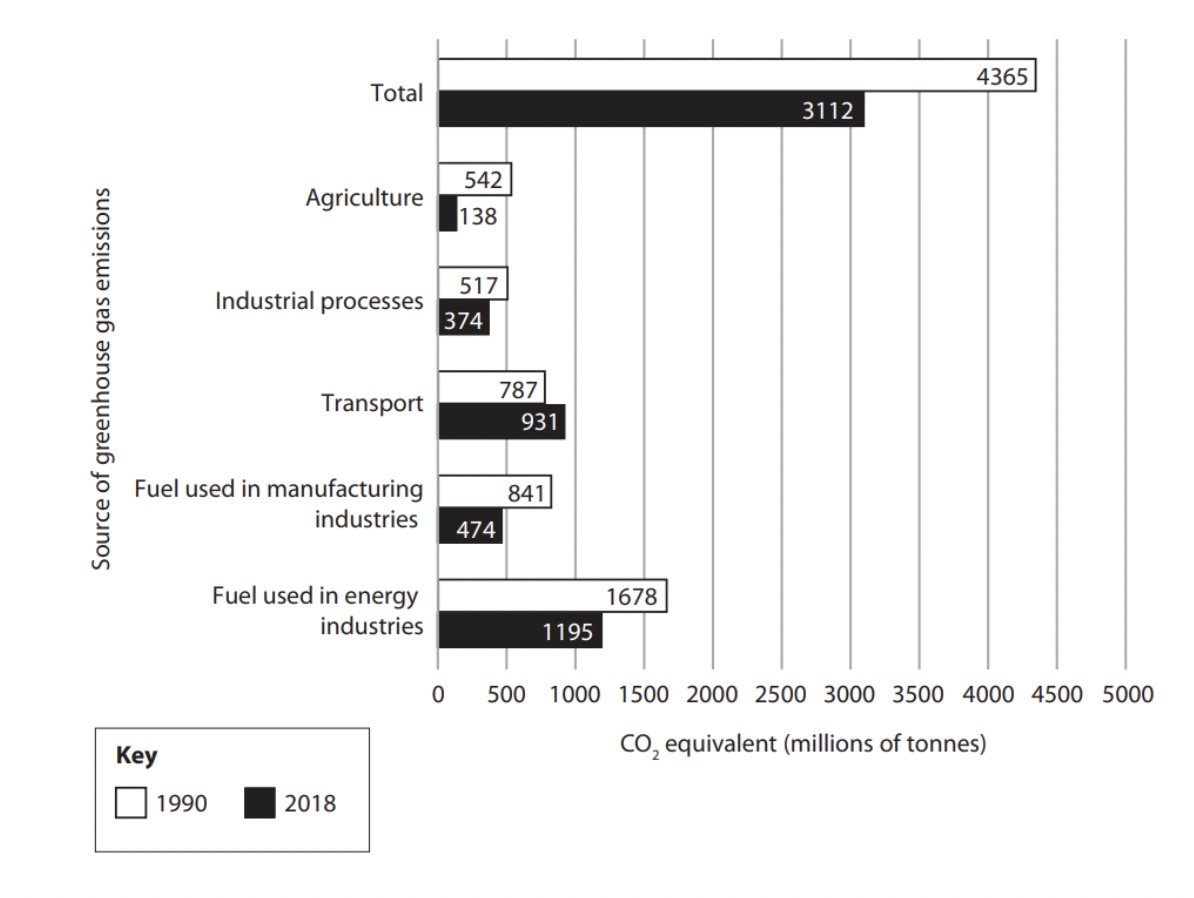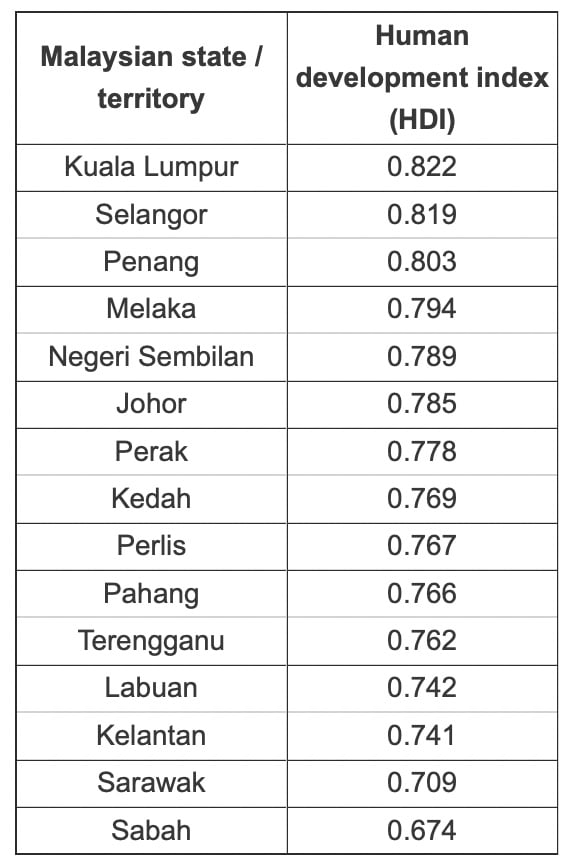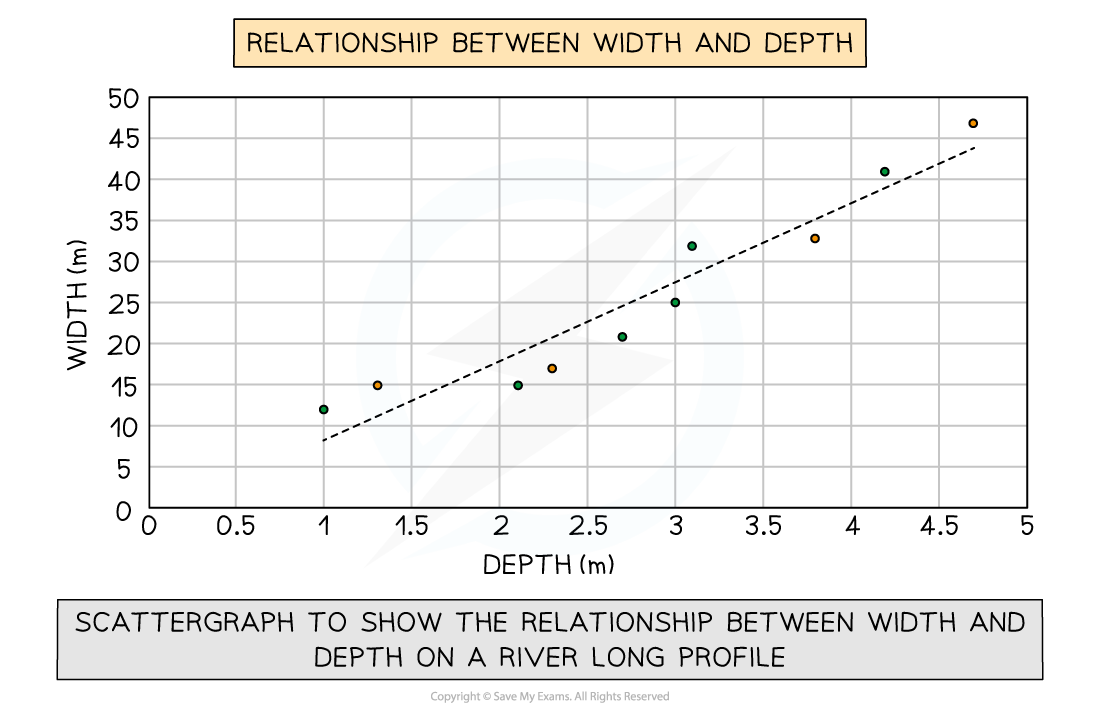Numerical & Statistical Skills (Edexcel GCSE Geography B) : Revision Note
Numerical Skills
A range of numerical skills are needed throughout the final exam papers
Proportion and ratio
Proportion is relating one part to the whole
In a group of 100 if there are 20 people who are 15 and 80 people who are 14
The proportion of those 15 year olds is 20/100 or 20%
Ratio is the comparison of two quantities
In a group of 100 if there are 20 people who are 15 and 80 people who are 14
The ratio is 1:4 so for every person that is 15 there are 4 people who are 14
Magnitude
Refers to the relative size usually of an event such as an earthquake
Frequency
Refers to how often something occurs
Worked Example
Analyse Figure 1
For 1960 calculate the ratio of rural population to urban population
(1 Mark)
Answer
Any of the following could be awarded 1 mark
5.5:1
550 to 100
55:10
110:20 (or 110 to 20)
22:4 (or 22 to 4)
11:2 (or 11 to 2)
Examiner Tips and Tricks
Always check when making calculations what the question has asked you to do. Is it asking for units to be stated or calculate to the nearest whole number or quote to 2 decimal places.
Statistics
Percentage and percentage change
To give the amount A as a percentage of sample B, divide A by B and multiply by 100
In 2020, 25 out of 360 homes in Catland were burgles. What is the percentage (to the nearest whole number) of homes burgled?
A percentage change shows by how much something has either increased or decreased
In 2021 only 21 houses were burgled. What is the percentage change in Catland?
There has been a decrease of 16% in the rate of burglaries in the Catland area
Do remember that a positive figure shows an increase but a negative is a decrease
Worked Example
Study Figure 1 which shows sources of greenhouse gas emissions in the European Union for 1990 and 2018

Calculate the percentage decrease in total emissions (CO2 equivalent) between 1990 and 2018
Give your answer to one decimal place
Show your working
(2 marks)
One mark is awarded for the working out
One mark is awarded for the answer to one decimal place
Answer
Emissions in 1990 = 3112
Emissions in 2018 = 4365
3112/4365 = 0.7129 x 100 = 71.29
100 - 71.29 = 28.71 (1)
To one decimal place = 28.7% (1)
Statistics
This is the study and handling of data, which includes ways of gathering, reviewing, analysing, and drawing conclusions from data
Measures of central tendency
Mean = average value (all the values added and divided by the number of items)
Median = middle value when ordered in size
Mode = most common value
Range = difference between the highest value and lowest value
Sample site | 1 | 2 | 3 | 4 | 5 | 6 | 7 |
Number of pebbles | 184 | 90 | 159 | 142 | 64 | 64 | 95 |
Taking the example above to calculate:
Mean -
Median - reordering by size =
= 95 is the middle value
Mode - only 64 appears more than once
Range -
Upper and lower quartiles
These are the values of a quarter (25%) and three-quarters (75%) of the ordered data
Number of shoppers | 2 | 3 | 6 | 6 | 7 | 9 | 13 | 14 | 17 | 22 | 22 |
|
|
| Lower quartile |
|
| Median |
|
| Upper quartile |
|
|
The interquartile range is the difference between the upper and lower quartile
Worked Example
Study Figure 1 which shows the Human Development Index (HDI) levels for states and federal territories in Malaysia

Calculate the interquartile range of HDI scores given in Figure 1.
Show your working
(2 marks)
Answer
Lower quartile (Labuan 0.742) and upper quartile (Melaka 0.794) (1)
Subtract the lower quartile from the upper quartile.
0.794 – 0.742 (1) and 1 mark for the correct answer of 0.052 (1)
Scatter graph
Points should not be connected
The best fit line can be added to show the relations
Used to show the relationship between two variables
In a river study, they are used to show the relationship between different river characteristics such as the relationship between the width and depth of the river channel
Strengths | Limitations |
|---|---|
Clearly shows data correlation | Data points cannot be labelled |
Shows the spread of data | Too many data points can make it difficult to read |
Makes it easy to identify anomalies and outliers | Can only show the relationship between two sets of data |

Types of correlation
Positive correlation
As one variable increases, so too does the other
The line of best fit goes from the bottom left to the top right of the graph
Negative correlation
As one variable increases the other decreases
The line of best fit goes from the top left to the bottom right of the graph
No correlation
Data points will have a scattered distribution
There is no relationship between the variables

You've read 0 of your 5 free revision notes this week
Sign up now. It’s free!
Did this page help you?

